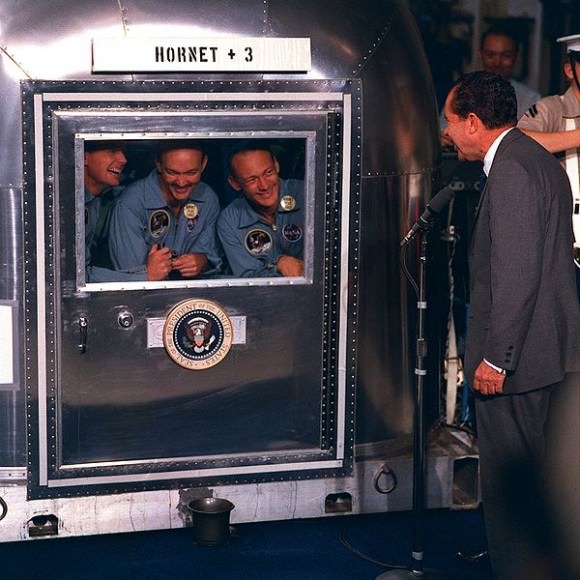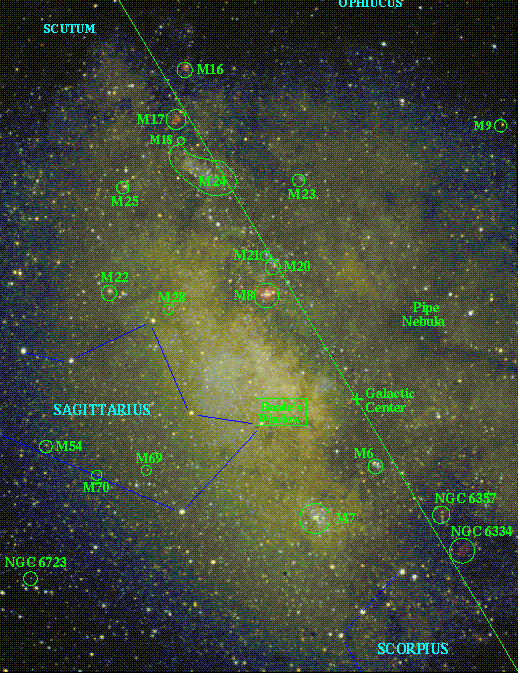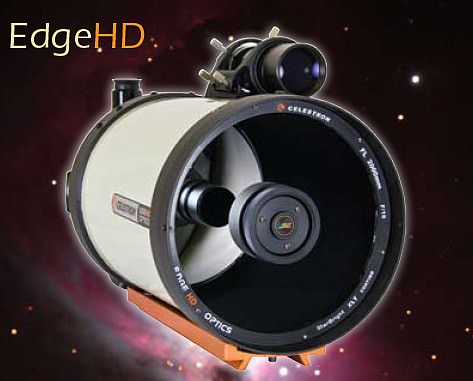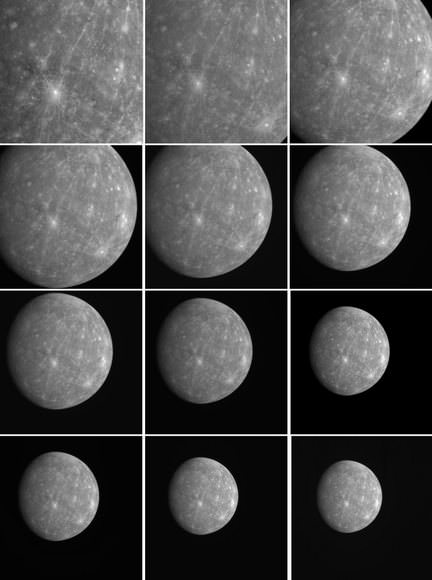How to Handle Moon Rocks and Lunar Bugs
: A Personal History of Apollo's Lunar Receiving Lab
50 lbs. of moon rocks. That's how much weight was allocated for the Apollo 11 astronauts to bring back lunar samples to Earth. But this would be the first time materials from another world would be brought to our planet. What should be done with these alien rocks, and could they possibly be a threat to life as we know it?
What started out as a seemingly straightforward idea of building a facility to store and study rocks from the Moon ended up becoming a power struggle between engineers building the facility and scientists who wanted to study the rocks and those who wanted to save the world from biological disaster — not to mention even more squabbling between the various governmental agencies and politicians. In the middle of it all was James McLane, Jr. one of the engineers tasked with the early planning for the Manned Spaceflight Center –now known as Johnson Space Center in Houston — and in particular, he led a group to determine the requirements and design concept of NASA's Lunar Receiving Laboratory.
(...)
Read the rest of How to Handle Moon Rocks and Lunar Bugs: A Personal History of Apollo's Lunar Receiving Lab (2,104 words)
Possible New Impact on Jupiter
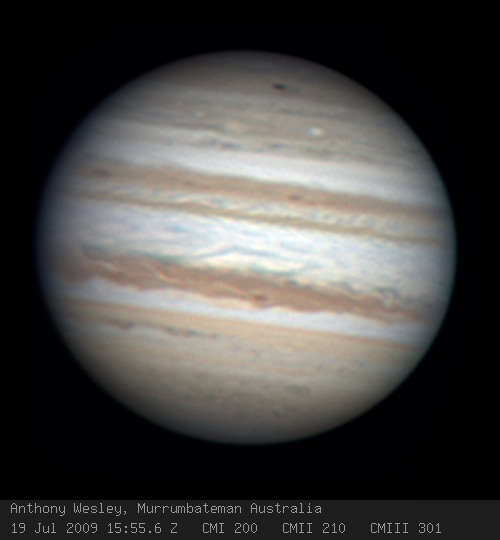
Amateur astronomer Anthony Wesley from Canberra, Australia captured an image of Jupiter on July 19 showing a possible new impact site. Anthony's image shows a new dark spot in the South Polar Region of Jupiter, at approximately 216° longitude in System 2. It looks very similar to the impact marks made on Jupiter when comet Shoemaker-Levy 9 crashed into the gas giant in 1994. (But read the Bad Astronomer's post that the black spot could also be weather.)
The list below shows the times (in UT) when the black spot will be visible again (generated in WinJupos by Hans-Joerg Mettig), and found on the Mike Salway's Ice In Space website.
(...)
Read the rest of Possible New Impact on Jupiter (351 words)
Kid's Astronomy: Sagittarius – A Seasonal Celebration!
Ah, yes… The skies have long been dark and the constellations have been on the move since the last time we've visited! Hercules now stands overhead when darkness falls. Summer's Lure, Scorpius is already going west of the meridian and Ophiuchus, the Fisher King has taken its place. In the southern hemisphere, they are tolerating winter – but the nights are warm in the north and with them comes our finest times of viewing our own Milky Way galaxy's spiral arm… Sagittarius. (...)
Read the rest of Kid's Astronomy: Sagittarius – A Seasonal Celebration! (1,906 words)
Weekend SkyWatcher's Forecast: July 17-19, 2009
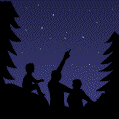 Greetings, fellow SkyWatchers! It's a picturesque weekend to get up early as the Moon heads for the Pleiades and on towards a close encounter with Venus. With plenty of dark skies to go around and the random meteor rate a little higher than usual, why not spend some time with the constellation of Lupus? No telescope or binoculars? No problem. There's also plenty of things to do over the next few days that only requires just your eyes and a little knowledge of the skies. I'll see you in the backyard… (...)
Greetings, fellow SkyWatchers! It's a picturesque weekend to get up early as the Moon heads for the Pleiades and on towards a close encounter with Venus. With plenty of dark skies to go around and the random meteor rate a little higher than usual, why not spend some time with the constellation of Lupus? No telescope or binoculars? No problem. There's also plenty of things to do over the next few days that only requires just your eyes and a little knowledge of the skies. I'll see you in the backyard… (...)
Read the rest of Weekend SkyWatcher's Forecast: July 17-19, 2009 (1,129 words)
Solar Cycle Triggers La Nina, El Nino-like Climate Shifts
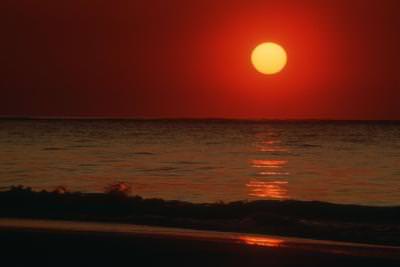
Credit: National Center for Atmospheric Research
Researchers have discovered a link between the 11-year solar cycle and tropical Pacific weather patterns that resemble La Niña and El Niño events.
When it comes to influencing Earth's climate, the Sun's variability pales in recent decades compared to greehouse gases – but the new research shows it still plays a distinguishable part.
(...)
Read the rest of Solar Cycle Triggers La Nina, El Nino-like Climate Shifts (653 words)
NASA Science News for July 17, 2009
NASA's Lunar Reconnaissance Orbiter has returned its first imagery of Apollo landing sites. The pictures show lunar module descent stages, scientific instruments and even 40-year-old foot trails made by astronauts walking across the dusty lunar surface.
FULL STORY at
http://science.nasa.gov/headlines/y2009/17jul_lroc.htm?list1035898
NASA Science News for July 17, 2009
Forty years ago, Apollo astronauts set out on a daring adventure to explore the Moon. They ended up discovering their own planet.
FULL STORY at
http://science.nasa.gov/headlines/y2009/17jul_discoveringearth.htm?list1035898
For more information about space and space exploration, visit our Home page: http://science.nasa.gov
The Eagle Has … Arrived
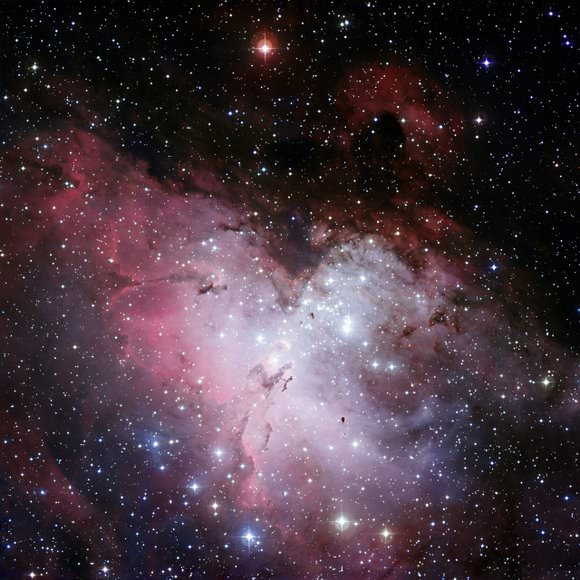
Eagle Nebula, courtesy of the European Southern Observatory
We're still a few days out from the 40th anniversary of the touchdown of Apollo 11's lunar lander, the Eagle. (The launch went off 40 years and just an hour or so ago.)
Presumably to hold us over, the European Southern Observatory (ESO) has released this stunning new image of the Eagle Nebula.
(...)
Read the rest of The Eagle Has … Arrived (389 words)
A High Definition Telescope? Yeah… The Celestron EdgeHD!
In this new generation of everything high def – from computer screen to televisions – is it possible to create a high definition telescope? The answer is yes… And the designer is Celestron. As always, I keep my eyes and ears open when it comes to the latest in astronomy equipment. While I've seen a lot of things come and go over the years (including other Ritchey-Chretien and astrograph knock-offs), the Celestron EdgeHD is a design that I think really deserves a closer look… (...)
Read the rest of A High Definition Telescope? Yeah… The Celestron EdgeHD! (1,116 words)
Moon For All Mankind
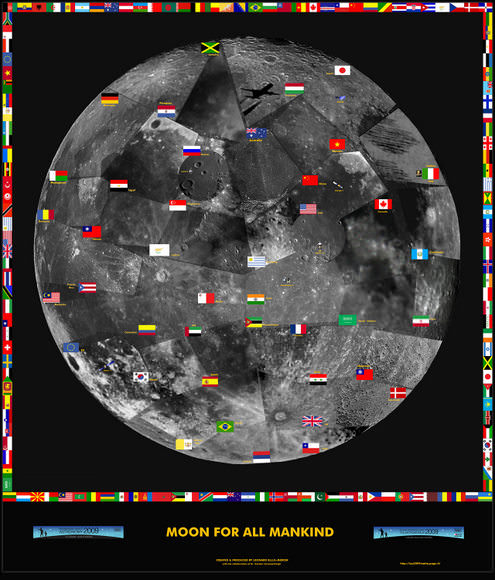
IYA2009/IYA2009 Malta
The archipelago of Malta has coordinated a global campaign to take images of sections of the Moon’s surface as seen from 40 countries, and combine them in this commemorative, symbolic whole called the “Moon for All Mankind.”
The composite was released today, which marks the 40th anniversary of the Apollo 11 launch. Monday will be the anniversary of the landing.
Update: The Malta IYA Committee wrote to share this link with UT readers — a really fascinating animation they created. Check it out!
(...)
Read the rest of Moon For All Mankind (307 words)
Mercury's Craters Get Artsy New Names
The MESSENGER mission has been revealing more of Mercury's surface, including plenty of craters so interesting that geologists have been christening them with names.
The International Astronomical Union released new names for 16 impact craters this week. All of the craters were discovered during the flyby in October, which is also when MESSENGER snapped these images–five minutes apart–as it left.(...)
Read the rest of Mercury's Craters Get Artsy New Names (574 words)
Ejected Black Holes Drag Clusters of Stars With Them
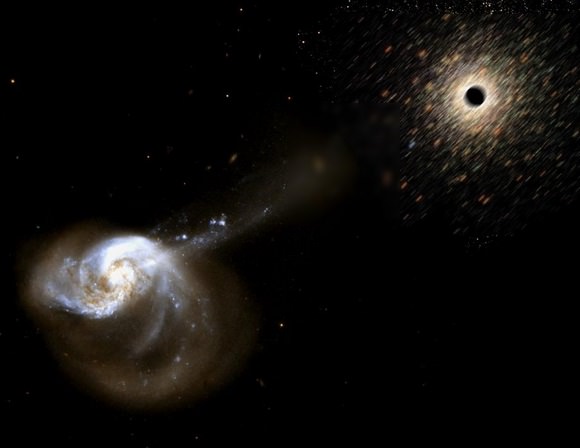
The tight cluster of stars surrounding a supermassive black hole after it has been violently kicked out of a galaxy represents a new kind of astronomical object which may provide telltale clues to how the ejection event occurred. “Hypercompact stellar systems” result when a supermassive black hole is violently ejected from a galaxy, following a merger with another supermassive black hole. The evicted black hole rips stars from the galaxy as it is thrown out. The stars closest to the black hole move in tandem with the massive object and become a permanent record of the velocity at which the kick occurred.
(...)
Read the rest of Ejected Black Holes Drag Clusters of Stars With Them (479 words)
NASA Science News for July 15, 2009
Why couldn't Neil Armstrong fall asleep on the Moon? The answer is revealed in today's suspenseful story from Science@NASA.
FULL STORY at
http://science.nasa.gov/headlines/y2009/16jul_wideawake.htm?list1035898
Welcome "Copernicium," Our Newest Element
The newest element on the periodic table will likely be named in honor of scientist and astronomer Nicolaus Copernicus. Element 112 will be named Copernicum, with the element symbol "Cp."
"We would like to honor an outstanding scientist, who changed our view of the world", says Sigurd Hofmann, head of the team who discovered the element.
(...)
Read the rest of Welcome "Copernicium," Our Newest Element (299 words)
Spirit's Psychedelic Visions
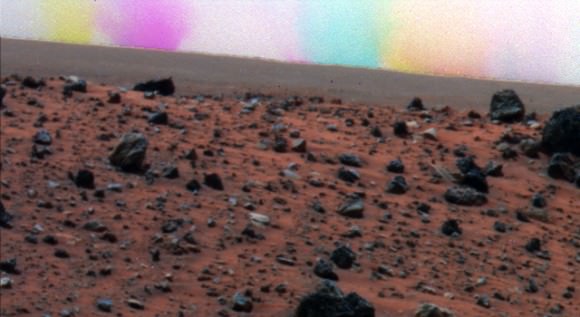
The Spirit rover has had memory problems, arthritic-like symptoms in her wheels, as well as her current dilemma of being stuck in loose Martian soil. But now, is she having psychedelic visions, too?! No, not to worry; she's not having hallucinations or smoking any mind-altering Martian weed. This image is just a combination of three images taken seconds apart through different colored filters to create a special-effects portrait of a huge, moving dust devil on Mars. It shows the dust devil in different colors, according to where it was on the horizon when each exposure was taken.
(...)
Read the rest of Spirit's Psychedelic Visions (234 words)
